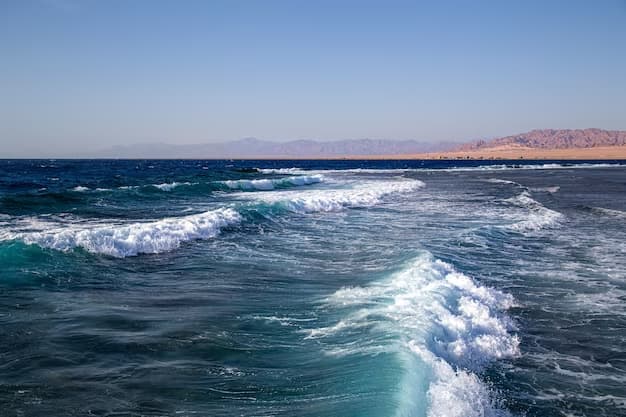The Southern Ocean, enveloping the Earth’s southern extremities, stands as a testament to nature’s resilience and complexity. Known by various names, including the Antarctic Ocean, this vast body of water encircles Antarctica, presenting a unique blend of ecological, geographical, and climatic phenomena.
Defining the Southern Ocean
The Southern Ocean, distinguished by its location below the 60th parallel south, integrates the southern portions of the Pacific, Atlantic, and Indian Oceans. Its recognition as the fourth-largest oceanic division underscores its significance, despite varying definitions of its boundaries due to differing geographical perspectives.
Geographical Features and Size
Occupying the Southern Hemisphere around 60 degrees south, the Southern Ocean emerges from the confluence of the Southern Pacific, Indian, and Atlantic waters, encircling Antarctica. This youngest of Earth’s oceans formed approximately 30 million years ago, spans an estimated 35 million square kilometers, representing about 6% of the planet’s surface area. Its depth ranges significantly, with an average of approximately 10,700 feet, plunging to over 23,000 feet at its deepest point, the South Sandwich Trench.
Climate and Environmental Conditions
Temperatures in the Southern Ocean vary from a frigid -2 degrees Celsius to a relatively mild 10 degrees Celsius, influenced heavily by the season. The harshest conditions are experienced in winter, from April to October, with summer providing a brief respite from October to February. Icebergs, a common sight, pose navigational hazards, particularly between May and October, when strong winds prevail.
Biodiversity and Marine Life
The Southern Ocean is a haven for diverse marine life, from the majestic blue whales and fur seals to the colossal elephant seals, outweighing an average truck. Over 100 million birds, including the wandering albatross, find sanctuary along its icy shores. The ocean’s most intriguing inhabitant, the giant squid, represents the largest invertebrate on Earth, exclusive to these waters.
Human Interaction and Research
Despite its remote location and challenging conditions, the Southern Ocean attracts over 50,000 tourists annually, drawn by its pristine environment and unique wildlife. Historically, explorers like Bartolomeo Diaz and Ferdinand Magellan braved these icy waters, paving the way for future expeditions. Today, research stations and annual yacht races underscore human engagement with this remote ocean.
Conservation Efforts
The Antarctic Treaty restricts military activity to scientific research, reflecting a commitment to preserving the Southern Ocean’s pristine environment. Concerns over climate change and its potential to raise global sea levels by melting the ocean’s ice reserves highlight the urgent need for conservation efforts.
Comparative Analysis of Earth’s Oceans
To illustrate the distinct characteristics of the Southern Ocean concerning the world’s other major oceans, the following table offers a comparative overview:
| Feature | Southern Ocean | Pacific Ocean | Arctic Ocean |
|---|---|---|---|
| Size (sq km) | ~35,000,000 | ~165,250,000 | ~14,056,000 |
| Average Depth (ft) | ~10,700 | ~13,215 | ~3,953 |
| Deepest Point (ft) | ~23,000 (South Sandwich Trench) | ~36,070 (Mariana Trench) | ~18,456 (Eurasian Basin) |
| Unique Features | Youngest ocean, encircles Antarctica | Largest ocean, contains deepest trench | Smallest and shallowest, polar ice cap |
| Marine Life | Giant squid, blue whales, elephant seals | Abundant in marine biodiversity | Polar bears, walruses, seals |
Key Points about the Southern Ocean
- Location and Boundaries: Circles Antarctica, recognized south of the 60°S latitude, blending the southernmost waters of the Pacific, Atlantic, and Indian Oceans;
- Significant Depth: Averages around 10,700 feet, with the South Sandwich Trench marking its deepest point at over 23,000 feet;
- Climate Extremes: Ranges from -2°C to 10°C, experiencing some of the coldest temperatures on Earth, especially in winter;
- Marine Biodiversity: Home to unique species like the giant squid and the largest population of emperor penguins;
- Human Interaction: Attracts thousands of tourists yearly, despite its harsh conditions, and has been historically significant for explorers;
- Conservation: Governed by the Antarctic Treaty, focusing on scientific research and protecting the marine environment from exploitation;
- Climate Change Impact: Plays a critical role in global climate patterns, with potential melting ice impacting global sea levels.
These bullet points condense essential information about the Southern Ocean, highlighting its distinctiveness, ecological importance, and the challenges it faces in the era of climate change.
Video Guide
To answer all your questions, we have prepared a video for you. Enjoy watching it!
Conclusion
The Southern Ocean, with its vast ice-covered expanses and rich biodiversity, remains a subject of fascination and study. Its unique characteristics not only contribute to Earth’s climate system but also offer invaluable insights into marine ecosystems and the impacts of climate change. As exploration and research continue, the importance of safeguarding this remote ocean for future generations cannot be overstated.



